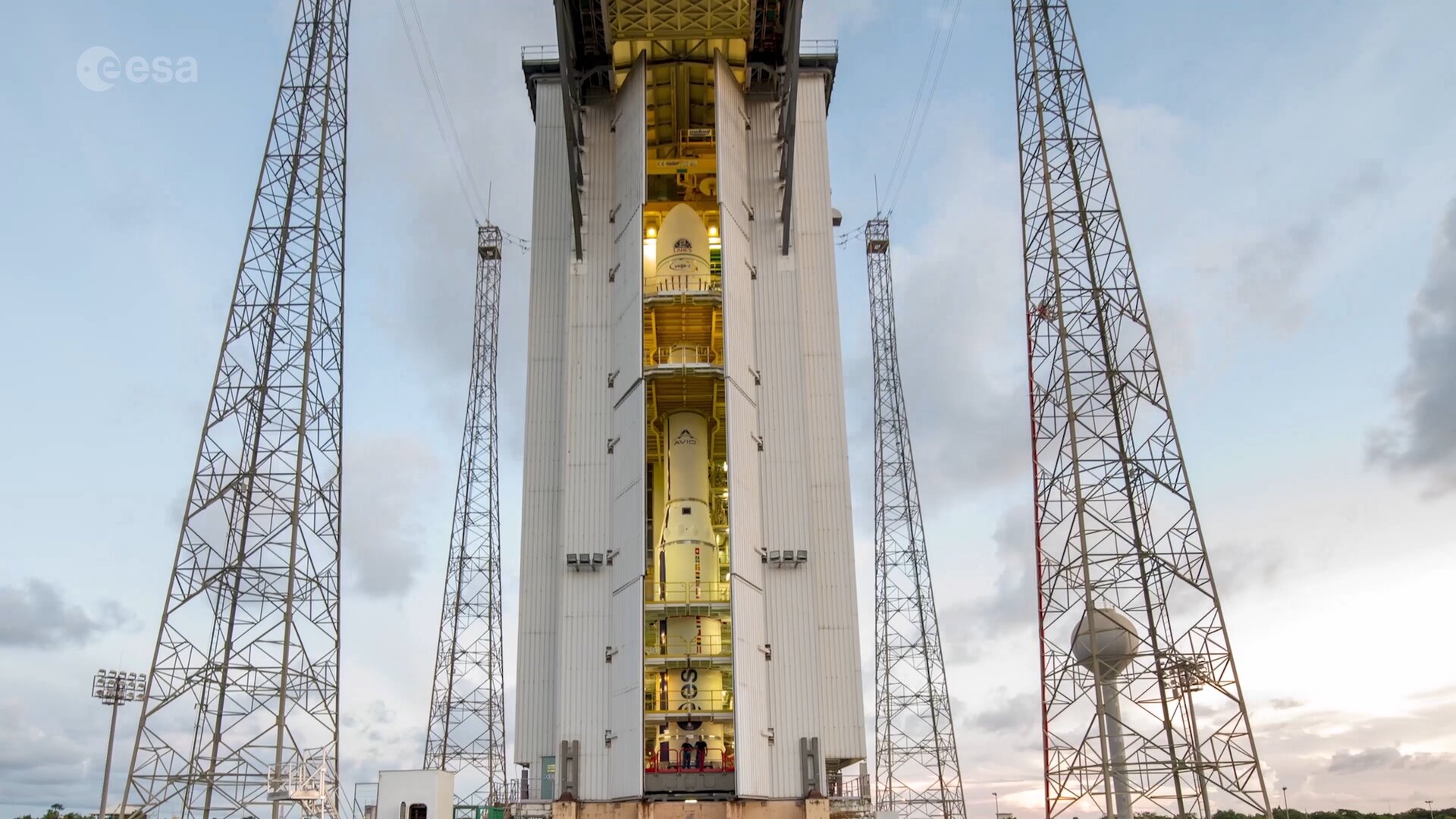15.07.2022
The European Space Agency is celebrating the first flight of its Vega-C rocket designed to provide more bang for customers’ buck in the increasingly competitive business of launching satellites into orbit

BERLIN -- The European Space Agency on Wednesday celebrated the first flight of its Vega-C rocket, which is designed to provide more bang for customers' buck in the increasingly competitive business of launching satellites into orbit.
Vega-C is an upgrade to the Vega rocket that made its debut in 2012 as a launcher specializing in lifting small payloads into space. The new rocket can carry heavier payloads than its predecessor while burning less fuel.
ESA says Vega-C will be particularly useful for launching Earth observation satellites, but it is also envisaged as the carrier for Space Rider, an uncrewed robotic laboratory that will be the agency's first re-usable space vehicle.
The 35-meter (115-feet) tall rocket's launch from French Guiana was twice delayed shortly before liftoff due to technical problems, but succeeded on the third attempt.
Vega-C accelerates much faster than its big brother Ariane 5, reaching a speed of 16,000 kilometers per hour (almost 10,000 mph) within two minutes of launch. The Ariane 5, ESA’s workhorse heavy launcher, is also due for an upgrade soon.
The Vega-C rocket on Wednesday released an Italian-made satellite called LARES-2 — which looks similar to a giant disco ball — that will act as a target for a ground-based laser station, and six small cube-shaped mini-satellites from France, Italy and Slovenia containing scientific experiments.
The head of ESA has announced a series of ambitious new projects as Europe tries to compete with the United States, China and new rivals from the private sector in the growing space business.
The agency is also developing a further variant, Vega-E, that uses a less polluting fuel made of liquid oxygen and methane. That launcher is aimed to be ready by 2026.
Quelle: abcNews
+++
Successful debut flight for Europe's Vega-C rocket
Europe has given a successful debut to its new Vega-C rocket.
The medium-lift vehicle was sent up from French Guiana to deliver seven satellites to orbit, the largest of which will test Einstein's general theory of relativity.
Vega-C has enormous importance for Europe's continued access to space.
It's needed to fill a big gap in capability now that Russian rockets are no longer available because of the war in Ukraine.
The withdrawal from the market of Moscow's Soyuz launchers earlier this year left European institutional and commercial satellites scrambling for alternative rides.
Vega-C will be the obvious option for many, although even before Wednesday's successful maiden flight, the new Italian-led rocket system was fully booked through 2023, 2024 and 2025.
And there's a further reason why Vega-C's entry into the launcher business is critical. Its first stage, the segment of the vehicle that gets it up off the ground, is also going to be used on Europe's forthcoming heavy-lift rocket, the Ariane-6.
Sharing the stage technology across both launcher systems is expected to lead to significant cost savings.
"The launch demand in Europe in the next couple of years and beyond is going to be high, and Vega-C and Ariane-6 are going to be our workhorses," said Josef Aschbacher, the director general of the European Space Agency.
"You should see this maiden flight as the first launch of a new generation of European rockets, the start of a strengthening of the role of Europe in space transportation," Giorgio Saccoccia, the president of the Italian Space Agency, told BBC News.
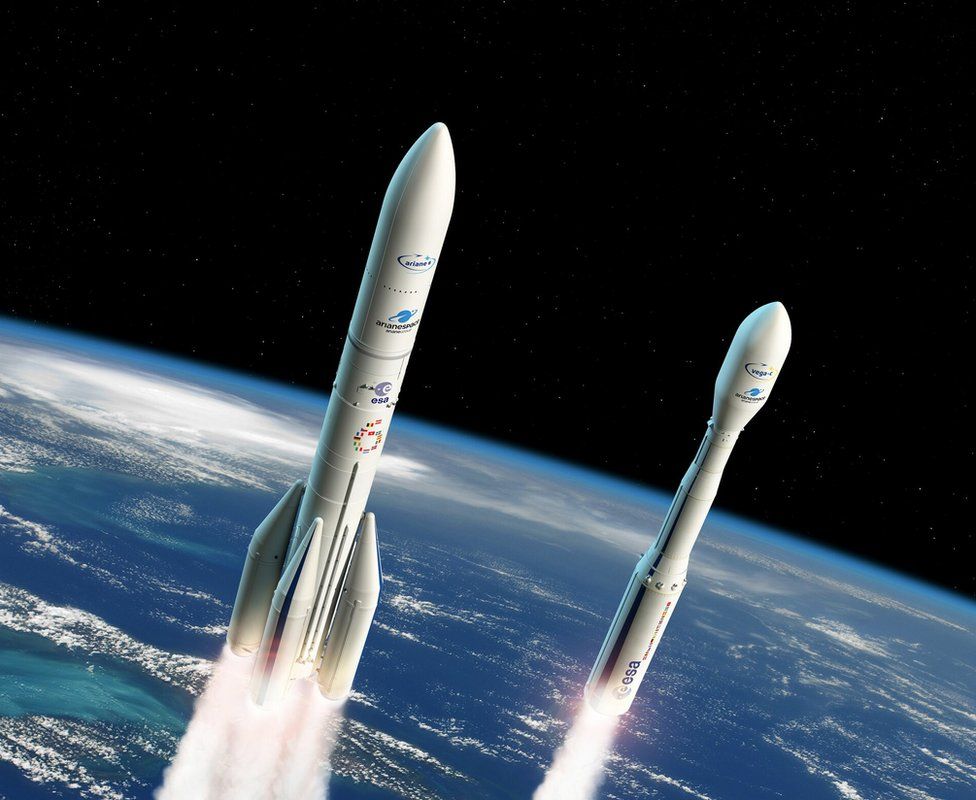 IMAGE SOURCE, ESA
IMAGE SOURCE, ESAVega-C is an enhancement of the old Vega vehicle introduced in 2012. The upgrade brings greater performance as well as cost reductions. And its designers hope their changes will add increased flexibility, too, to meet the diverse demands of today's satellite operators.
Some spacecraft, such as the European Union's Earth observation Sentinels, can weigh a couple of tonnes. At the other end of the spectrum, there's been a surge in the production of shoebox-sized (and smaller) spacecraft.
Vega-C will have the ability therefore to fly big, single payload missions, as well as so-called rideshare missions where many tens of little satellites are lofted at once.
Another role for Vega-C will be to carry Europe's mini robotic space shuttle to orbit. The Space Rider will take up scientific experiments and return them to Earth. Its first outing is likely to be in 2024.
Both the earlier Vega and Vega-C use an upper-stage engine made in Ukraine. This has been the topic of much discussion because of the war in the east European nation.
The concern has been whether the conflict might interrupt the supply of these RD-843 motors, produced by Yuzhmash, Ukraine's state-owned aerospace manufacturer.
But Avio, the Italian firm responsible for assembling Vega vehicles, says it already has enough in its possession for the short term.
Longer-term, a western European alternative is being developed.
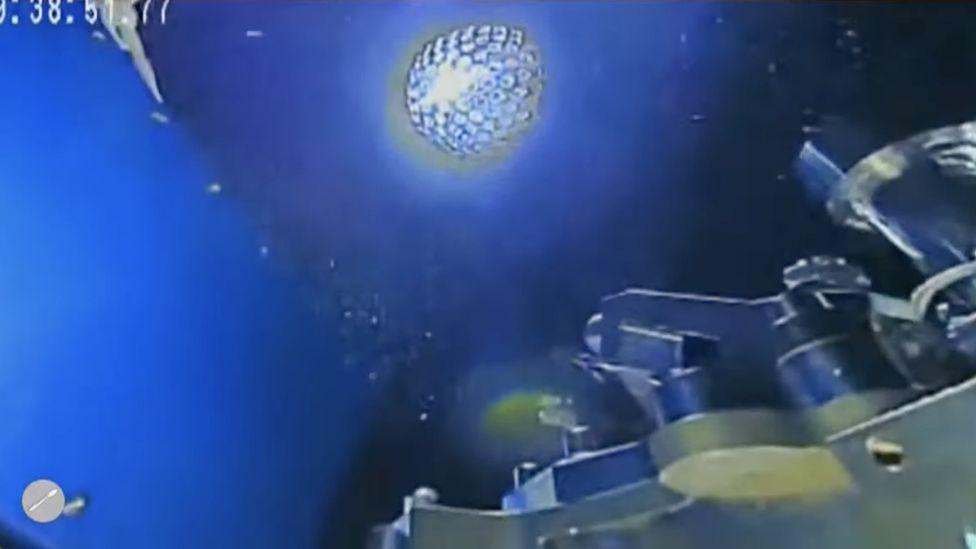 IMAGE SOURCE, ESA
IMAGE SOURCE, ESAUkraine, as well as wanting to join the European Union, also wants to become a member of the European Space Agency. One of its key contributions would be engine technology.
"The process has started. It takes about 10 years to go through all the steps to full membership," explained Dr Aschbacher.
"I do have a mandate given to me by Esa's member states to discuss with Ukraine and to identify projects or opportunities for cooperation, although given current circumstances this is only happening at a light level.
"But, certainly, there is huge interest on the side of Ukraine to go through all the obligatory steps as quickly as possible."
Wednesday's launch put seven satellites in orbit, including the Lares-2 (Laser Relativity Satellite-2) payload. Looking like a disco ball, it will be tracked very precisely by lasers from the ground.
Researchers at Italy's National Institute for Nuclear Physics say this will enable them to test "frame dragging", a phenomenon predicted by Einstein's equations that sees the Earth twist local space-time around with it as it rotates.
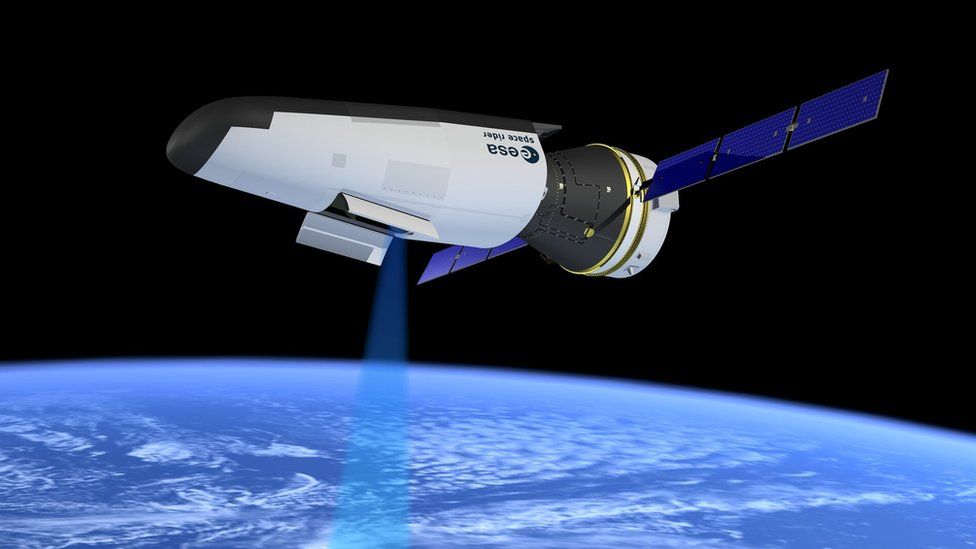 IMAGE SOURCE, ESA
IMAGE SOURCE, ESAVega-C successfully completes inaugural flight

ESA’s new Vega-C rocket has completed its inaugural flight, placing main payload LARES-2 – a scientific mission of the Italian Space Agency ASI – into its planned orbit. Six research CubeSats from France, Italy and Slovenia flew as secondary payloads. The launch caps a multi-year effort by ESA, prime contractor Avio and industrial partners in 13 ESA member states to build on the heritage of its predecessor, Vega.
Flight VV21 lifted off from Europe’s Spaceport in French Guiana at 15:13 CEST/13:13 UTC on 13 July 2022 (10:13 local time). This mission lasted about 2 hours and 15 minutes from lift-off to release of final payload and final burn of the AVUM+ upper stage engine.
Total payload mass at liftoff was approximately 474kg: 296 kg for LARES-2, with the remainder being the six CubeSats, payload adapters and carrying structures.
Vega-C represents a dramatic capability boost compared to Vega, which has flown since 2012. With new first and second stages and an uprated fourth stage, Vega-C increases performance from Vega’s 1.5 t to about 2.3 t in a reference 700 km polar orbit.
Overseeing launch operations from mission control at the Spaceport, ESA Director of Space Transportation Daniel Neuenschwander remarked: “Today we open a new era of European launch solutions, starting with Vega-C and to be complemented by Ariane 6.”
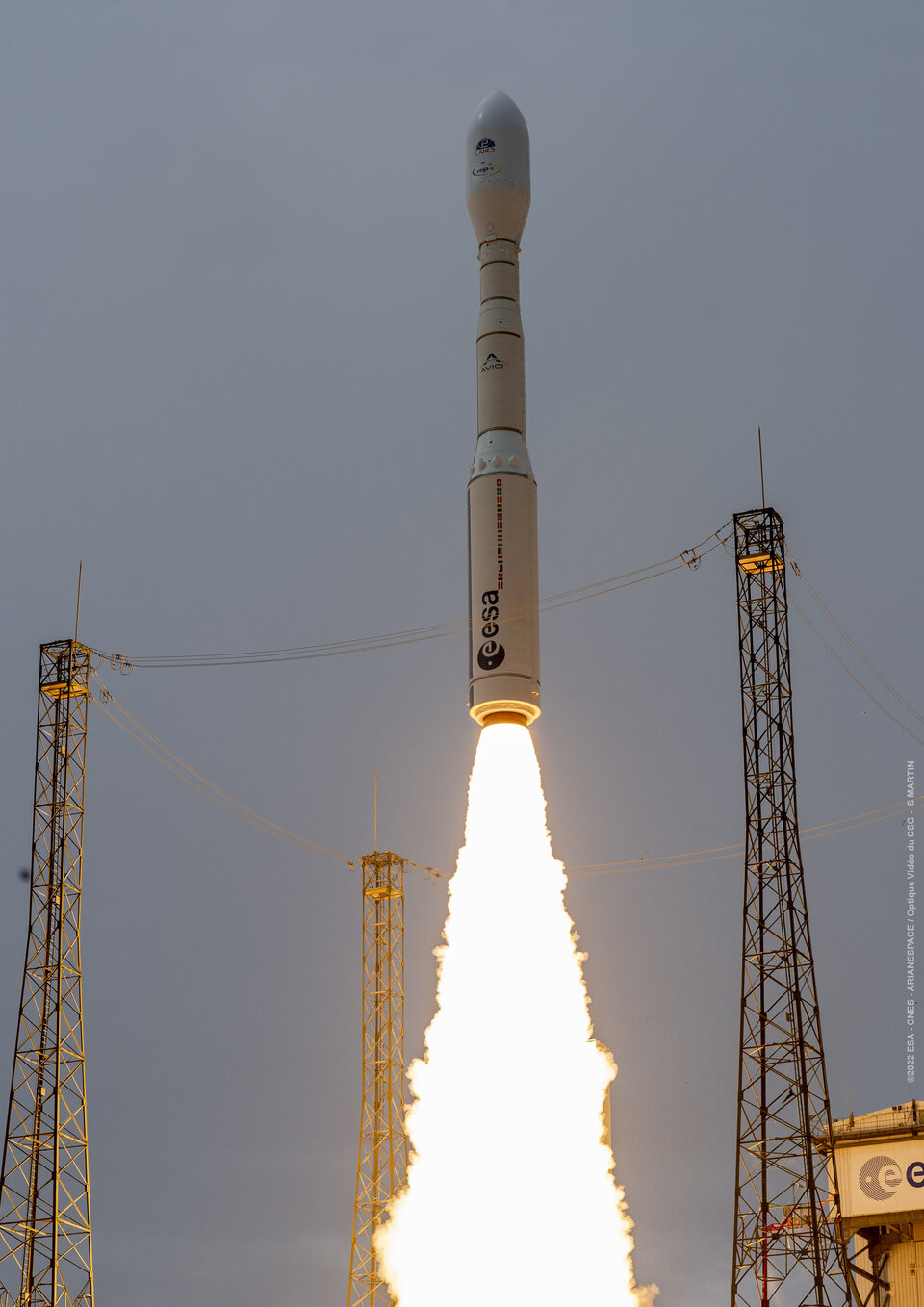
Vega-C features a new, more powerful first stage, P120C, based on Vega’s P80. Atop that is a new second stage, Zefiro-40, and then the same Zefiro-9 third stage as used on Vega.
The re-ignitable upper stage is also improved. AVUM+ has increased liquid propellant capacity, to deliver payloads to multiple orbits depending on mission requirements and to allow for longer operational time in space, to enable extended missions.
The P120C motor will do double service, with either two or four units acting as strap-on boosters for Ariane 6. Sharing this component streamlines industrial efficiency and improves cost-effectiveness of both launchers.
With its larger main stages and bigger fairing – which doubles the payload volume compared to Vega – Vega-C measures 34.8 m high, nearly 5 m taller than Vega.
The new launcher configuration delivers a significant improvement in launch system flexibility. Vega-C can orbit larger satellites, two main payloads or accommodate various arrangements for rideshare missions. ESA’s upcoming Space Rider return-to-Earth vehicle will be launched to orbit on Vega-C.
The precise orbital path of LARES-2 will be tracked by laser, from ground stations. The purpose of the mission is to measure the so-called frame-dragging effect, a distortion of space-time caused by the rotation of a massive body such as Earth as predicted by Einstein’s General Theory of Relativity. Its predecessor, the similar LARES, was the main payload on the 2012 inaugural flight of Vega.
Six CubeSats made a secondary payload package. AstroBio CubeSat (Italy) will test a solution for detecting biomolecules in space. Greencube (Italy) carries an experiment to grow plants in microgravity. ALPHA (Italy) aims to help understand phenomena related to Earth’s magnetosphere, such as the Northern and Southern Lights.
Three other CubeSats – Trisat-R (Slovenia), MTCube-2 (France) and Celesta (France) will study the effects of a harsh radiation environment on electronic systems.


